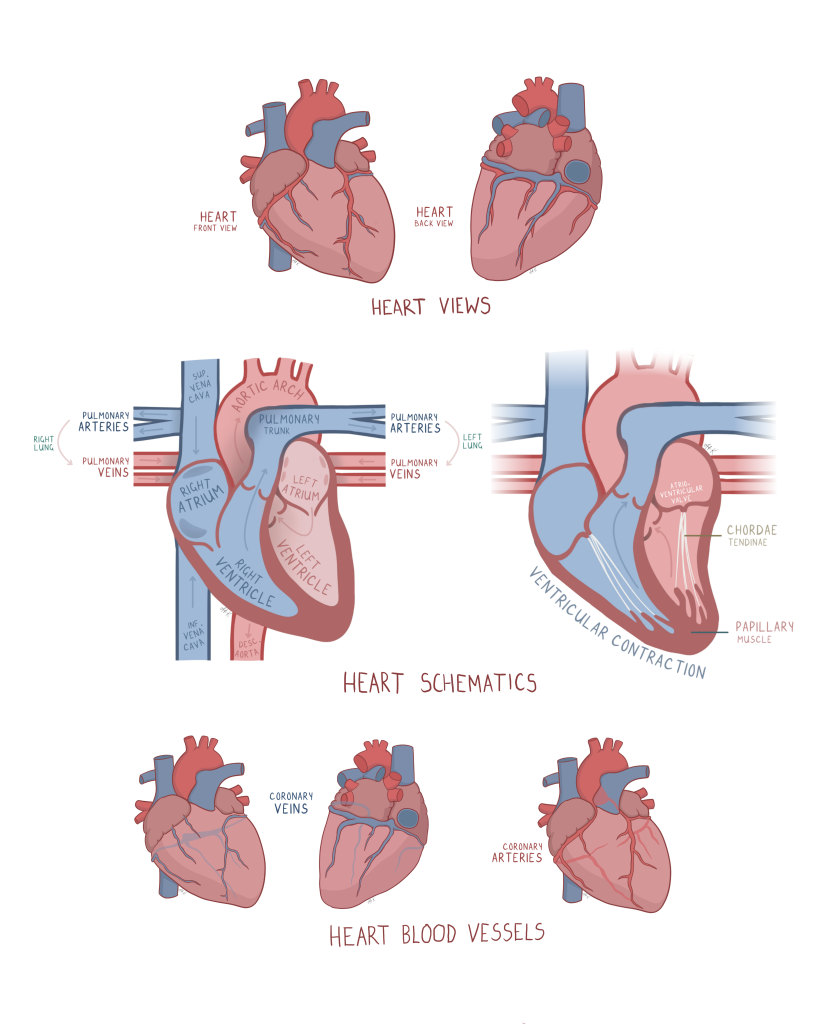61 Summary
Now that you’ve learned all the parts of the cardiovascular system, let’s put it all together and follow the journey of a single red blood cell through the heart, and then through the entire body.
Deoxygenated blood drains into the right atrium which contracts to pump the blood into the right ventricle through the tricuspid valve. When the ventricle contracts, blood is pumped through the pulmonary valve and into the pulmonary artery. This blood courses past the lungs via the alveolar capillary beds where oxygen diffuses through the capillary walls. This oxygenated blood is collected into the pulmonary veins which lead to the left atrium.
The oxygenated blood drains into the left atrium which contracts to pump blood past the bicuspid valve and into the left ventricle. The left ventricle contracts and the blood swiftly exits past the aortic valve and into systemic circulation.
Past the aorta, the blood travels through arteries leading to arterioles then into an array of capillaries. Once the blood enters capillaries and oxygenates the surrounding tissues, this blood returns through venules leading into larger veins. All blood leading through veins will again enter the right atrium. This blood is delivered to the atrium through the inferior or superior vena cava or the coronary sinus.

Figure 119 Summary diagram of the cardiovascular system

